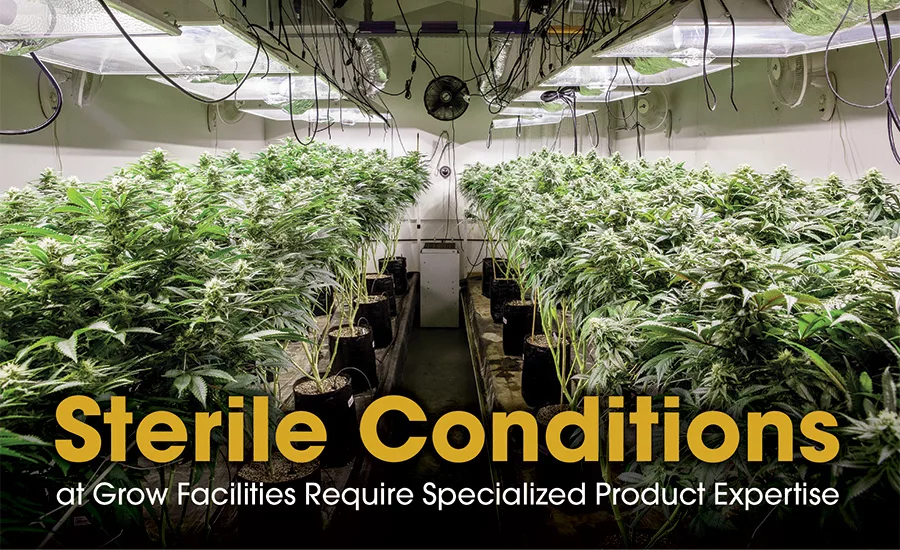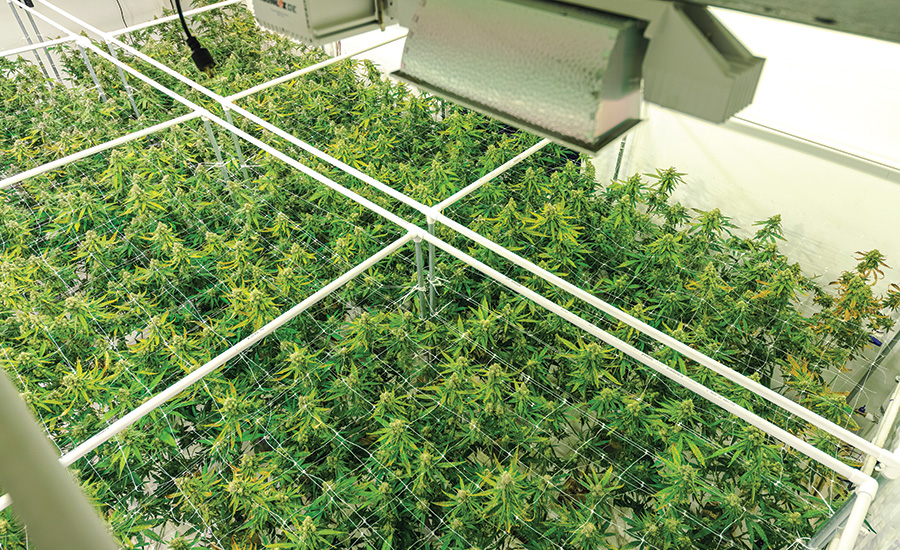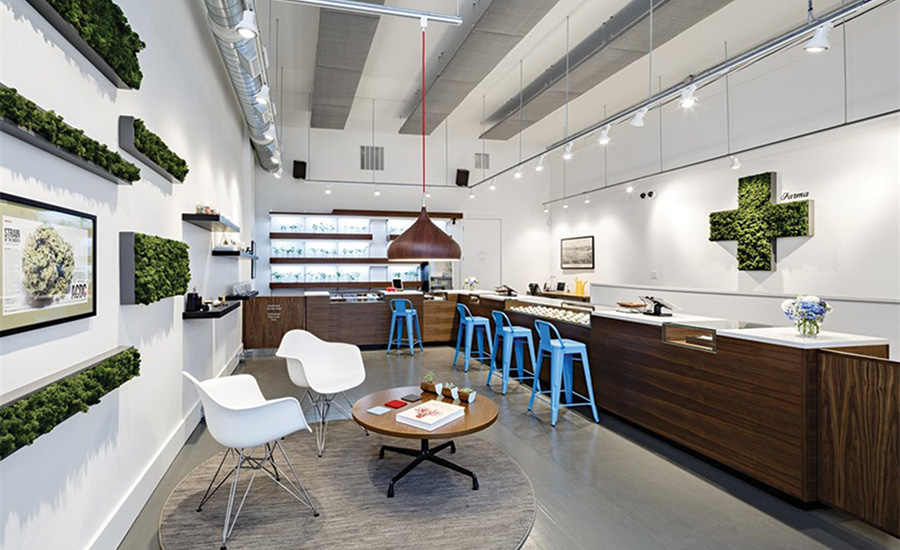Sterile Conditions at Grow Facilities Require Specialized Expertise

As more states move to legalize recreational cannabis use, grow facilities are becoming a common part of the business model. Legal, controlled grow rooms are relatively new; therefore, states are still learning how to regulate them. Questions like, “Should growers have the same regulations as farmers?” or “Should growers and operators be held to a higher standard like those of pharmaceutical facilities?” are being asked to help push regulations forward.
In California, one of the states on the forefront of the burgeoning cannabis-growing industry, the regulations are more defined. According to Alexi Cortez of Diverse Technology Industrial, a flooring contractor in Tracy, Calif., regulations are becoming as strict as those for pharmaceutical companies.
“Cannabis cultivation facilities are subject to some of the most strenuous requirements, because the product they’re producing is regulated for purity and cleanliness,” Cortez said. “That’s why they only want the best of the best for their production facilities, including the flooring.”
Moisture Control is Key to Cleanliness
While there are four distinct stages in most cannabis operations (cultivation, processing, distribution, and consumption), they all have one obstacle in common: moisture. After all, if moisture levels are too high in a cannabis facility, mold and bacteria begin to form, leading to potential contamination of the product. Contamination can cost downtime and, in a worst-case scenario, millions of dollars if the entire crop is condemned or recalled. It’s something cannabis growers want to avoid at all costs.
ICP Building Solutions Group (BSG) is a member of the National Cannabis Industry Association and works closely with members to find solutions to combat mold and moisture issues.
Experts within ICP BSG, like Josh Trowman from the Environmental Restoration Group, say that choosing the right coatings for a grow room is critical. Trowman recommends a three-step process to ensure a grow facility is a healthy facility:

- Clean the surfaces with an advanced peroxide cleaner to ensure no residues remain on the walls. Look for products that have deep-cleaning degreasers to lift residues like liquid fertilizer buildup, as well as foaming and lifting agents. This will save time, labor, and leave behind a clean surface for step two.
- Kill all microbes and potential mold spores with a disinfectant or sanitizer to reduce the potential of mold colonization or microbial contamination. Regular and consistent use of antimicrobial products will prevent microbial growth on surfaces like walls, ceilings, floors and working surfaces.
- Coat the facility with preventive coatings to preserve facility investments. Find a coating that is sustainable, reflective, odor-suppressing and mold-resistant for all structural surfaces (walls, ceilings, doors and benches) and HVAC surfaces where ordinary finishes can be hospitable to microbial growth.

Pay Special Attention to Flooring
In addition to moisture concerns, proper flooring is essential in cannabis facilities. Flooring must be reflective of light to improve growing conditions and reduce energy consumption. Additionally, in extraction and processing areas where solvents may be used, facilities must use electrostatic dissipative (ESD)-compliant flooring for safety.
Moisture in flooring can also be a concern. Uncontrolled, moisture can cause the flooring to fail. It’s important to find coatings that accomplish several critical goals, including:
- Keeping fungicides or fertilizers from leeching into the ground and discouraging microbial growth.
- Resisting the potential concrete degradation caused by the high-humidity conditions of the grow room.
- Providing an easily cleanable, slip-resistant and hygienic surface.
- Withstanding heavy loads and rigorous cleaning practices as well as daily wear and tear.
Not every floor coating meets these important performance criteria, which is why cannabis producers should allow their flooring professionals to guide them to the right flooring system.
Choosing the coatings for a cannabis facility isn’t always an easy decision, given the differences between states in regulation and compliance measures. The best way to ensure cannabis facilities are properly coated is to educate yourself, as the contractor, on the best products and processes available, and enlist the help of other experts in this field.
The bottom line: Do your due diligence and make sure you’re hiring the proper people to implement a foolproof coating system—and it is a system. Often, a coatings supplier can assist in the selection process.
Looking for a reprint of this article?
From high-res PDFs to custom plaques, order your copy today!








